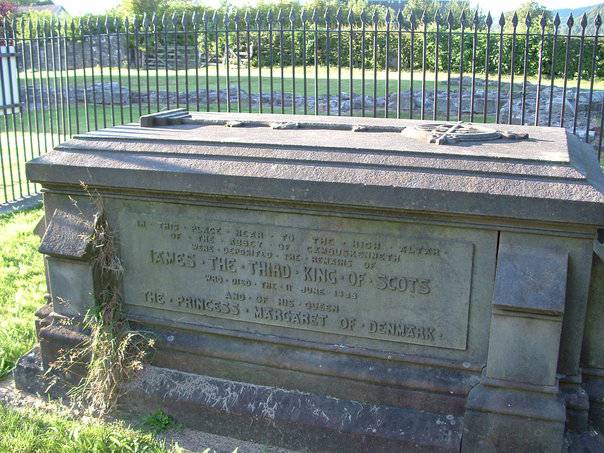

Cambuskenneth Abbey is a ruined Augustinian monastery located on an area of land enclosed by a meander of the River Forth near Stirling in Scotland. The abbey is largely reduced to its foundations. The neighbouring modern village of Cambuskenneth is named after it.
Cambuskenneth Abbey was founded by order of David I around the year 1140. Dedicated to the Virgin Mary, it was initially known as the Abbey of St Mary of Stirling and sometimes simply as Stirling Abbey. The major street leading down the castle hill from the royal residences in Stirling Castle to the abbey was called St. Mary's Wynd, a name it retains.
Cambuskenneth was one of the more important abbeys in Scotland, due in part to its proximity to the Royal Burgh of Stirling, a leading urban centre of the country and sometime capital. Its status as a royal abbey in the neighbourhood of a major national stronghold may be compared to that of Holyrood Abbey vis à vis Edinburgh. Royalty, including Edward Longshanks and later Robert the Bruce (King of Scots), prayed regularly at the abbey. Bruce held his parliament there in 1326 to confirm the succession of his son David II.
In 1486 Margaret of Denmark died at Stirling Castle and was buried at the abbey. In 1488 her husband James III was murdered at the Battle of Sauchieburn and his body was brought to Cambuskenneth Abbey for burial. The elaborate marker of his grave, which was funded by Queen Victoria, is still visible at one end of the church.
The abbey fell into disuse during the Scottish Reformation. By 1559 there were few monks remaining there, and the abbey was closed and most of the buildings looted and burned. The abbey was placed under the jurisdiction of the military governor of Stirling Castle, who had much of the stonework removed and used in construction projects in the castle.
Of the once wealthy abbey, mostly only knee-high ruins and exposed foundations remain. Only the 13th century campanile is intact, following an extensive renovation in 1859. The abbey was acquired by the crown in 1908, and it is managed by Historic Scotland. The abbey is open to visitors during the summer months. Visitors can enter the base room of the campanile; the stairs to the upper floors are locked, but are opened for visitors on occasion.
